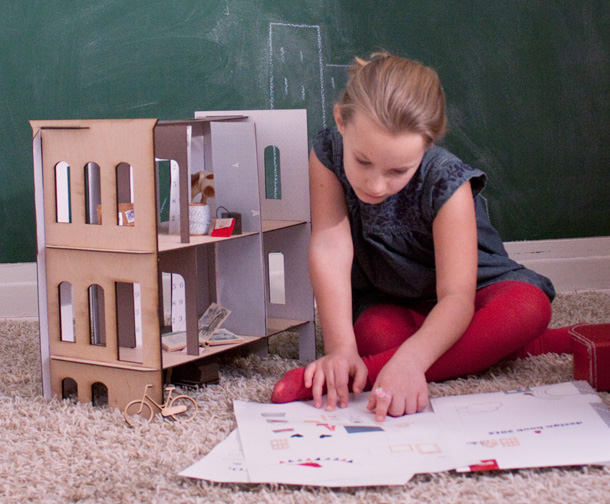‘Better dollhouse’ designed by former student available soon
 Alyson Beaton
Alyson Beaton
[Lille Huset] (http://growbookspress.myshopify.com/collections/mini-houses) , a line of eco-friendly, modular mini dollhouses designed by a former environmental design student at Texas A&M, will soon begin production thanks to an online fundraising campaign.
Alyson Beaton, who earned a Bachelor of Environmental Design at Texas A&M in 1997, has created the collection, six unique dollhouse designs with birch plywood front facades and paperboard walls — a hard material, Beaton said, stiff and durable enough to take some abuse, but light enough to be portable.
“It’s an ideal material for attaching kid-inspired wallpapers, paintings, coloring or ‘decorations,’” she said.
To finance Lille Huset , the Norwegian phrase for “little house,” she turned to [Kickstarter] (http://www.kickstarter.com/projects/1166919790/lille-huset) , a public funding platform for creative projects, where she quickly reached an $8000 goal to fund the cost of the dyes, printing, laser cutting, boxes and materials for producing the first run of 1000 doll houses, which she’s planning to take to New York trade shows in August to explore distribution possibilities.
A small house in Chicago’s Logan Square, built by a Norwegian family more than 100 years ago, inspired Lille Huset’s design, said Beaton. It’s current owners are renovating the home “to make it a new, modern home so it can live for 100 more years,” she said.
Beaton, an [assistant professor of graphic design] (http://www.colum.edu/academics/Art_and_Design/Faculty_Staff/Full_Time_Faculty_Image/Alyson_Beaton.php) at Chicago’s Columbia College and a professional designer with 15 years’ experience, said the idea for creating the house came when her daughter’s seventh birthday was approaching.
“I wanted to get her a dollhouse that would fit her age and I am a very picky consumer,” she said, adding that she saw a gap in the market between wooden and plastic doll houses for little kids, and high-end “grown up” dollhouses, which struck her as houses kids aren’t supposed to touch.
“I wanted to design a better doll house that would inspire creativity, be inspired by urban neighborhoods, be beautifully crafted, packed flat for portability, that all kids could enjoy and love,” she said.
Since that decision 18-months ago, Beaton has created a variety of prototypes, had them “field-tested” by kids before settling on a final basic design.
“After a year and a half of working on the line and having had so much support from my interns, friends, family and colleagues, I am so excited to be at this phase,” she said.
Previous post
Tags
Related Posts
Entrepreneurial course unlocks student potential
Nine companies on Aggie 100 list led by arch. college grads
Architecture college alumni head 14 firms in 2015 Aggie 100 list

13 outstanding alums share how college aided their success
Adams teaches students about business abroad
Follow Us
Facebook Twitter Vimeo Youtube Flickr RSS
Recent Posts

Planning prof heads study of disaster housing aid

A message from the dean

Former student remembered as expert planner

Leading educator named new head of Architecture Dept.

 Alyson Beaton is taking her designs of mini dollhouses to trade shows in New York this August. She financed the project through a fundraising website.
Alyson Beaton is taking her designs of mini dollhouses to trade shows in New York this August. She financed the project through a fundraising website.



_thumbnail_small.png)
